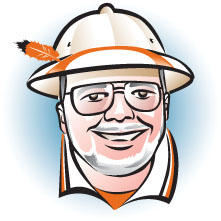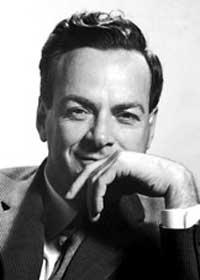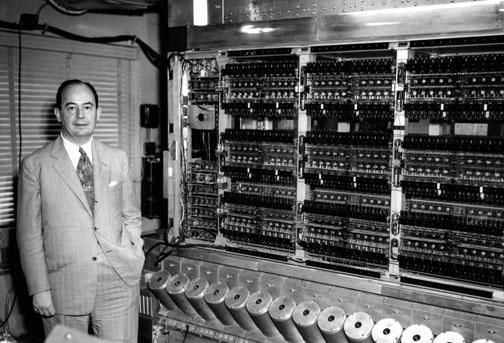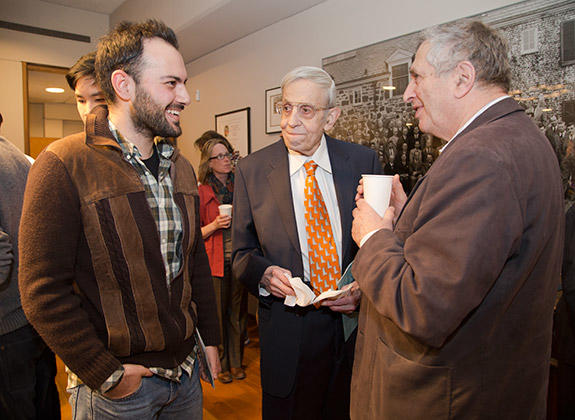And baby, you’re so smart you know you could have been a schoolbook.
Well, you could have been anything that you wanted to, and I can tell
the way you do the things you do.
— Smokey Robinson and Bobby Rogers
We do try to be mutually supportive here in the rarefied realm of Quality Alumni Literature, and in that spirit I commend to you the fun article in the April 1 issue by my PAW henchguy Mark Bernstein ’83 profiling movie mogul Kip Thorne *65. Thorne until recently was better known as one of Professor John Wheeler’s physics legatees, famed fellow astrophysiocosmologer-type of such as Carl Sagan, Richard Feynman *42, and Stephen Hawking – with whom he always seems to have a bet going about the end of some universe or other – and winner of the Einstein Medal and the American Physical Society’s Lilienfeld Prize. My own idiosyncratic adventures in Hollywood (I once worked for six months on the third floor of the prop shop on the old MGM lot – don’t ask) lead me to suspect that, despite all good intentions of Christopher and Jonathan Nolan and their thousand Interstellar minions, Professor Thorne had to heavily adjust his communication style from the norm at Caltech to contribute successfully as an executive producer on the film. This multi-level exercise got me thinking about some of the other crossover adventures in the STEM (that’s science, tech, engineering, and math, for any of us who aren’t obsessing on the National Science Foundation’s acronym list) world that seem to be a continuing saga around Princeton.
Speaking of Richard Feynman. Another doctoral student of Wheeler’s, and a physics Nobel-winner for work in quantum electrodynamics, he was also a raconteur (his first autobiography is titled Surely You’re Joking, Dr. Feynman) who is best known to the public for his legendary demonstration of materials science: As a malcontent member of the Rogers Commission investigating the Challenger space-shuttle disaster in 1986, at a televised hearing he impatiently dunked material from the rocket’s O-ring in a glass of ice water to demonstrate its lack of resilience, dramatically illustrating why seven highly trained explorers died.
Speaking of materials science, there’s John Bardeen *36, whom we’ve highlighted before, who trained as a mathematician under the great Eugene Wigner and who won two physics Nobels for the revolutions in transistors and superconductivity that are among the bedrock of modern applied science. Bardeen hung around old Fine Hall with a commingling of mathematicians and physicists that even the players had trouble telling apart – physics Nobelist Albert Einstein was on the math faculty of the Institute for Advanced Study along with multigenius John von Neumann, but it was Wigner and von Neumann who ended up at Los Alamos working on the atomic bomb during World War II. Meanwhile, physicist Edwin McMillan *33, a student of Edward Condon, ended up winning a Nobel himself – in chemistry, for work in creating the first transuranium elements.
Von Neumann really was the model for the multiphasic talent pool; his photo should be in your Funk and Wagnall’s as a definition for “polymath.” Winner of the Bôcher Prize in math and the first Enrico Fermi Award in Physics and Energy (a legacy of Los Alamos), he worked in the infant field of computing as well (his 1940s von Neumann computer architecture is foundational). That was something of a warmup to a tour de force: Game theory, which he and Princeton economics professor Oskar Morgenstern invented at the interface between mathematical statistics and human behavior as a rigorous way to analyze decision making, and which now is at the core of modern economics, diplomacy, you name it. To put the icing on top, the Institute for Operations Research and the Management Sciences looked at all his contributions to applied math and named its lifetime achievement award in operations research for von Neumann in 1975. Since then, no fewer than 11 Princeton math grad alumni (including longtime department chair and historian Albert Tucker *32 and his collaborator, Professor Harold Kuhn *50) have won the award; the latest is Tucker’s student Michel Balinski *59 in 2013.
Of course, von Neumann was hardly more unique, groundbreaking, and influential than Alan Turing *38, currently my wife’s favorite Princetonian because of another fine piece of cinema, The Imitation Game (although I suspect there may be some conflation with actor Benedict Cumberbatch), which conveys how far beyond the faculty lounge at Fine he had to go to successfully attack the German Enigma code machine during World War II at Bletchley Park; the successful anti-Enigma machine filled most of a room. A student of Alonzo Church ’24 *27 (with heavy participation from visiting logician Kurt Gödel), Turing ended up another creator of, for all practical purposes, his own field – computer science and, by extension, artificial intelligence – and is now the namesake of the Turing Award, the computer science Nobel. His centennial celebration at Princeton in 2012 was remarkable for its breadth and the import that a wide range of speakers placed on his work (e.g. “Mathematical Biology, Past, Present and Future: From animal coat patterns to brain tumours to saving marriages”); four years earlier, PAW’s list of the most influential Princetonians in history included Turing at No. 2, just between James Madison 1771 and Woodrow Wilson 1879.
And while noting the multifarious achievements of all these Princeton mathematicians, we also should recall that turnabout is fair play. The Fields Medal, oldest of the world-rank math prizes (the most recent awardees include Professor Manjul Bhargava *01, student of Professor Andrew Wiles of Fermat’s Last Theorem fame), is highly competitive and somewhat controversial because winners must be under age 40 – the donor saw it as a stimulus as much as a reward – and includes one, and only one, non-mathematician among its 56 recipients. That’s physicist Edward Witten *76, student of physics Nobelist David Gross, and famed for his work in string theory at the Institute for Advanced Study, von Neumann and Einstein’s old stomping ground on the far side of the golf course. In citing the reasons for awarding the math prize to a young physicist, the committee had to resort to accessible examples, such as Witten’s applying supersymmetry (physics) to the topology of manifolds (math). Perhaps we should just stop there.
But perhaps my favorite recent crossover prizewinner is professor emeritus Daniel Kahneman, winner of the 2002 Nobel in economics and namesake of the Wilson School’s new Center for Behavioral Science and Public Policy, whose body of work is a powerful exercise of experimental reasoning – in psychology. Those of us who strongly suspect less than complete rationality in the modern practice of economics need only consult his brilliant Thinking, Fast and Slow to see what an insightful outsider can bring to an entire field of research.
So then, time for the big finish, combining our excursus into the realms of winning prizes outside your own academic field, the brilliance of John von Neumann, the tinsel and glitter of Hollywood, and the great math teacher Albert Tucker, along with this morning’s headlines. Piece of cake. Mathematician John Nash Jr. *50, Tucker’s doctoral student, has just been awarded the Abel Prize, along with the Fields and Wolf prizes considered the Nobel-level recognition in math. Whoa, you say, that’s not a crossover; and you, the Discerning Reader, would be correct. This is the rule that proves the exception. Lionized for decades, awarded the von Neumann Prize for Operations Research and the Nobel Prize in Economics, Nash is already the all-time king of academic crossovers, in large part because of the literary fame (A Beautiful Mind, both the Academy Award-winning film and the brilliant biography by Sylvia Nasar) surrounding his Nobel, the very first for an applied “economist,” following years of battling schizophrenia with the support of many Princeton friends and colleagues. His entire early career had been bent on the Fields Medal, and somehow that committee and the Wolf folks never warmed up to his groundbreaking pure math work in nonlinear partial differential equations, which has become increasingly admired in the mathematics community over the years. Meanwhile, one of his brilliant contemporaries, John Milnor ’51 *54, who studied with Ralph Fox *39, became one of only four people on Earth who’s received all three prizes. All that has now come to a happy close for the 86-year-old Nash, with a capstone in his own field that not only honors his work and the legendary Princeton math department of the ’30s, ’40s, and ’50s, but overjoys the Princeton friends who’ve seen him through bad times and good. Almost as satisfying as being executive producer of a major Hollywood film
Dei sub numine viget.
May 24: John Nash and his wife Alicia were killed last night in a taxi crash on the New Jersey Turnpike. Their life stories are literally cinematic in scope, their locus the Orange Bubble of Princeton, and so it arrives as disturbingly jarring and unrealistic news. We mourn their tragic passing and celebrate their unique, complex lives in the greatest sympathy with their families and with their many devoted associates in Princeton.















No responses yet